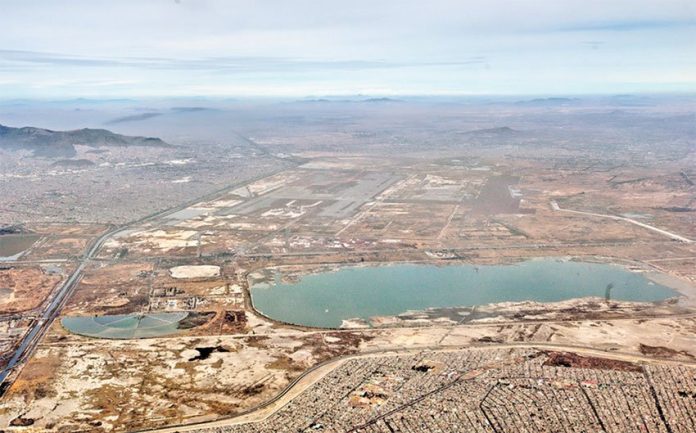The foundations of the X-shaped terminal building and a section of runway at the abandoned airport project in Texcoco, México state, will be left under water as the result of the restoration of a drained lake.
More than 14 billion pesos (US $728.7 million) was spent on those two elements of the project before the airport was canceled following a public consultation last October.
The federal government is now pursuing a project to convert the airport site and surrounding areas into a massive ecological park.
Architect Iñaki Echevarría, who is leading the project for the National Water Commission (Conagua), told the newspaper Milenio that part of the project entails restoring the Casa Colorada lake – which will cover the terminal foundations and runway – as well as the Xalapango, Texcoco Norte and Nabor Carillo lakes.
Water that previously ran into the first three lakes from seven Valley of México rivers was diverted to five smaller lakes at a cost of 17 billion pesos in order to allow the airport to be built.
Echevarría said there was no reason to remove the terminal foundations before refilling the Casa Colorada lake because they are 4.5 meters below the water table.
“There are certain pieces [of infrastructure] that don’t need to disappear to recover the proper functioning of the site,” he said.
Echevarría rejected the claim that the foundations could be used to build a sports center.
“No! That’s a misconception that people have, that it can be used, that something can be put on top . . . It’s 4.5 meters below the water table so you’d have to be constantly pumping [water out] so that it doesn’t flood,” he said.
Flooding the base of the unbuilt terminal is the most viable option, the architect added.
Construction of the Lake Texcoco Ecological Park will be divided into four phases and is expected to take five years.
The first phase involves construction of a 300-hectare park between Lake Nabor Carillo and the Peñón-Texcoco highway. Echevarría said that work will start in the next two months and the park will open in the second half of next year.
The second phase of the project will focus on the conversion of the airport site, the third will develop the northern Caracol area while the fourth will see the construction of sports and cultural infrastructure in a zone that borders the México state municipality of Nezahualcóyotl, the project chief explained.
In addition to restoring the lakes, artificial shores will be built to encourage native birds to nest.
At least 130 different types of vegetation that was stripped from the site before and during construction of the airport will also be reintroduced.
Once completed, the park will be one of the largest natural reserves in the world, Echevarría said, pointing out that it will be 20 times bigger than Mexico City’s Chapultepec Forest.
The park will help to prevent flooding in surrounding México state municipalities, reinvigorate native flora and fauna, mitigate air pollution and serve as an attraction for the more than 20 million people who live in the Mexico City metropolitan area.
Conagua estimated in March that the preliminary studies required for the project would cost 221 million pesos (US $11.5 million) but has not yet publicly revealed the total cost of developing the urban park.
Source: Milenio (sp)
